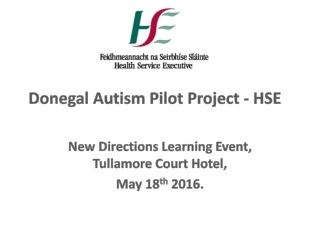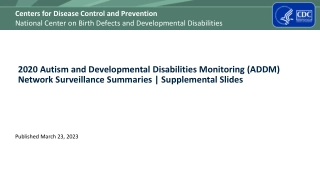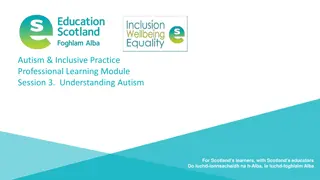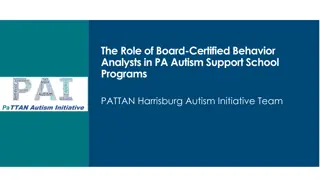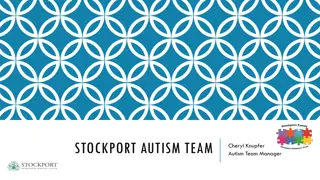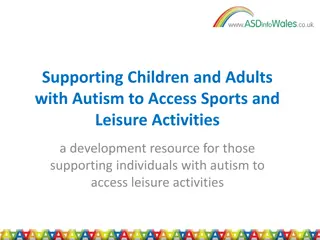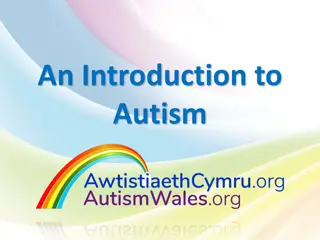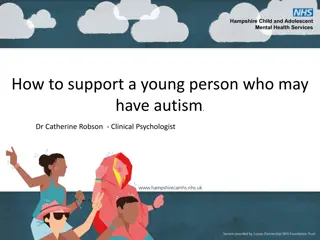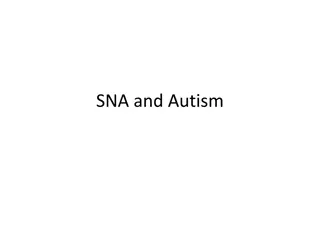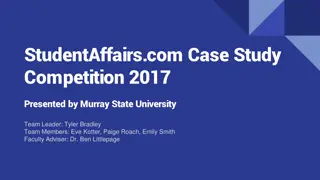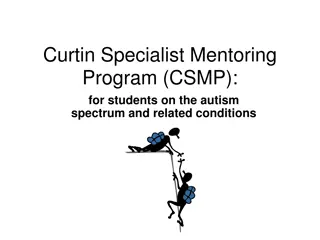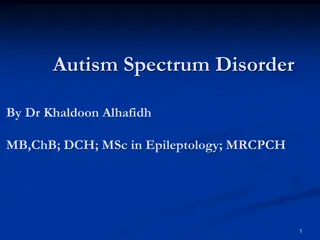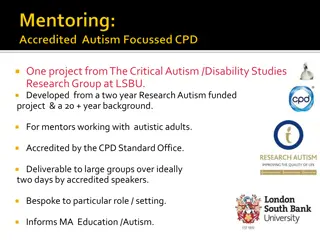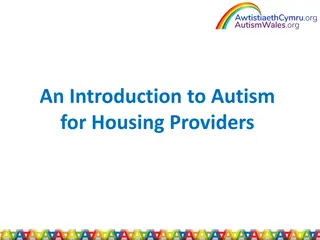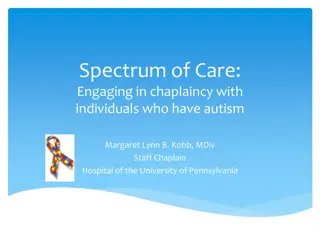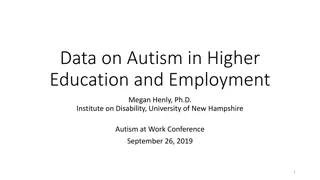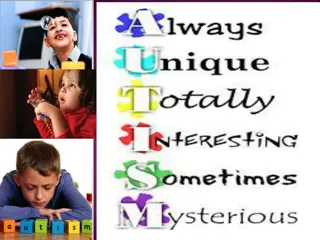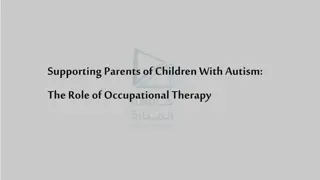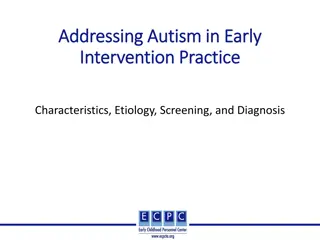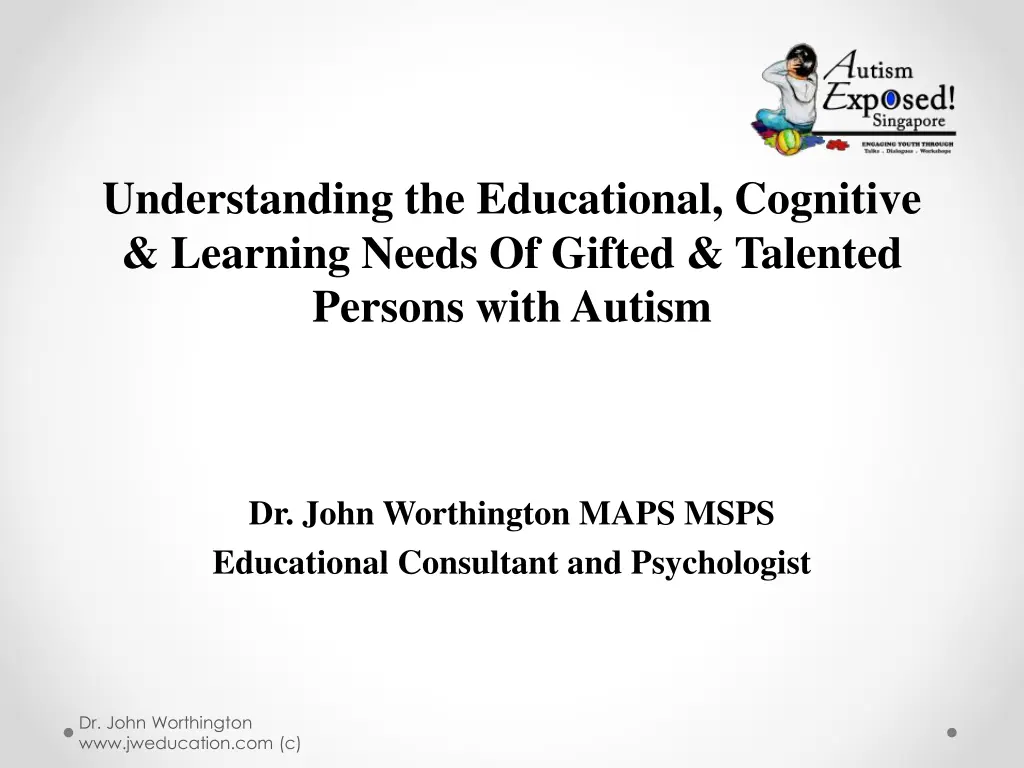
Understanding the Educational, Cognitive, and Learning Needs of Gifted and Talented Individuals with Autism
Explore the complex interplay between Autism Spectrum Disorder (ASD) and cognitive profiles in gifted individuals, uncovering challenges and potentials for optimized learning experiences. Dr. John Worthington sheds light on the impacts of ASD on learning, highlighting the importance of recognizing diverse cognitive profiles and addressing unique educational requirements for gifted individuals with autism.
Download Presentation

Please find below an Image/Link to download the presentation.
The content on the website is provided AS IS for your information and personal use only. It may not be sold, licensed, or shared on other websites without obtaining consent from the author. If you encounter any issues during the download, it is possible that the publisher has removed the file from their server.
You are allowed to download the files provided on this website for personal or commercial use, subject to the condition that they are used lawfully. All files are the property of their respective owners.
The content on the website is provided AS IS for your information and personal use only. It may not be sold, licensed, or shared on other websites without obtaining consent from the author.
E N D
Presentation Transcript
Understanding the Educational, Cognitive & Learning Needs Of Gifted & Talented Persons with Autism Dr. John Worthington MAPS MSPS Educational Consultant and Psychologist Dr. John Worthington www.jweducation.com (c)
Overview A brief word of caution UnderstandingASD and it s impacts on learning, both positive and negative The relevance of an uneven cognitive profile and learning gaps and delays Differentiated learning adjustments and universal design for learning ASD and the possible positive impacts on learning Using positive characteristics to inform education and learning needs ASD and possible negative impacts on learning Dr. John Worthington www.jweducation.com (c)
A Word of Caution The wide and growing recognition of ASD as a significant condition is a positive development, its formal diagnosis remains complex. Publications, organizations and government agencies agree in the main on the characteristics which result in a diagnosis of ASD, however, the basis for diagnosis will continue to evolve. When professionals are supporting parents of children who may have ASD it is essential that a diagnosis does not occur by default . That is, where records begin to use ASD based on what was observed or said rather than after a formal diagnosis has been made by the appropriate individual or team (in writing). Dr. John Worthington www.jweducation.com (c)
UnderstandingASD and its Impacts on Learning ASD individuals with average to high intellectual abilities may have an uneven cognitive profile and there may be a significant gap between their potential and functional skills. An uneven cognitive profile in combination with the specific difficulties a person on the spectrum may have, could obscure that individual's true learning potential. Gifted and talented individuals on the spectrum can also have other significant challenges including language impairment, motor difficulties, sensory issues, self-injury. In addition older individuals (adolescents/adults) are far more likely to have depression (50%) and experience anxiety (70%). Dr. John Worthington www.jweducation.com (c)
Some ASD Characteristics consequences and challenges Diagnostic Criteria / Characteristic Resulting behaviour / consequences Management Challenges Other Factors Complex disorder Society in general is based on a neuro- typical view of the world, individuals with ASD have a different world view. Acknowledging the child has a different world view which may well be the cause/s of a particular behaviour. Behaviour may be unrelated to ASD e.g. health, sleeping, ADHD, anxiety Persistent disorder Characteristics will tend to persist, moving behaviours from the negative / damaging time consuming characteristic to be more positive productive Observing and understanding the behaviour and using that to guide change (e.g. make lining up more useful) then move on to other generalizable tasks. Parents , teachers, therapists and others needing to understand the underlying persistent nature of ASD and its impact Awareness Understanding Action Dr. John Worthington www.jweducation.com (c)
Diagnostic Criteria / Characteristic Social awareness and communication Resulting behaviour / consequences Management Challenges Other Factors Poor or incorrect reading of social cues. Preference for reduced or no social interaction. At risk of bullying. Teaching social communication to broaden social contact. Not forcing the child to do things they are not ready for. Deliberate use of language, provide language modelling and adequate time to respond. Opportunities for sharing in semi- structured activities, one- to-one or in small groups. Teach how to read facial expressions. Identifying the sensory profile of the child. Reducing the impact of the sensory sensitives through manipulation of the environment, appropriate diversion and or de-sensitising. Such as appropriate seating, quite areas, less Using other strategies such as social media to facilitate social awareness and communication. This could be the end goal or a step to more direct interaction. Sensory Sensitives Sensory seeking or avoidance leading to; social isolation and perceived difference and interrupted learning and recreation. Social consequences if unable to do some social things e.g. touch / Changing the environment without isolating the child. Dr. John Worthington www.jweducation.com (c)
Diagnostic Criteria / Characteristic Resulting behaviour / consequences Management Challenges Other Factors Issues with Reciprocity Can lead to social isolation and negative perceptions by others. Modelling and teaching reciprocity Can be mistaken for rudeness or social ignorance. Cultural differences, what is seen to be appropriate in one culture may be an issue in another. Using social stories to illustrate turn taking. Repetitive behaviours Can be time consuming and avoidant. Non- productive but may be an escape. Identifying the nature of the repetitive behaviour as it presents and using it to inform learning. Allowing the child to engage in repetitive behaviours at and for appropriate times, possibly as a reward. Dr. John Worthington www.jweducation.com (c)
Diagnostic Criteria / Characteristic Restricted interests, preoccupation with interests Resulting behaviour / consequences Can be socially isolating (from neuro-typicals), limit learning in broader areas. Occupying time with particular interests may help a child settle and or be used as a reward. Management Challenges Accept (appropriate) special interests manage involvement to appropriate amounts of time and places. Use the knowledge within the special interest to inform teaching. Other Factors Special interests can become a major positive factor in an individual s adult life in terms of vocation and social connections. Diagnostic Criteria / Characteristic Issues with change, desire for sameness Resulting behaviour / consequences Can lead to anxiety and emotional outbursts. Can present as oppositional behaviour. Management Challenges Can present as extreme situation specific behaviour. Event should be used to inform future planning to avoid the same situation, teach signalling (child indicated they are getting anxious) Other Factors While there are some things which must happen (e.g. fire evacuations) practice regularly, give warning of a drill. Most things can be manipulated to accommodate a particular child s needs at a particular time. Develop strategies for managing anxiety Dr. John Worthington www.jweducation.com (c)
Diagnostic Criteria / Characteristic Resulting behaviour / consequences Management Challenges Other Factors Possible associated issues, learning difficulties, intellectual ability, language disability, motor differences Slower academic learning, poor receptive and or expressive language, difficulties with skills such as handwriting. Include a visual emphasis, simple drawings and symbols to show order and direction. Social Stories Emotional issues, anxiety, (later depression) Displays of anxiety impacting on functioning. Recognition of the cause, strategies to reduce symptoms, teach relaxation/mindfulness. Use Social Stories to explain what will happen and preview situations which will be different. Dr. John Worthington www.jweducation.com (c)
The Relevance of an Uneven Cognitive Profile and Learning Gaps and Delays Autism is a complex persistent disorder which causes significant impairment, however specific difficulties can be masked by learned or other compensatory strategies. The features which will impact on learning include; difficulties with social communication, sensory sensitivities, interactions and reciprocity, non-verbal communication and establishing and maintaining relationships. Also present can be barriers related to repetitive behaviours, restricted interests and difficulties with change and a desire for sameness. Dr. John Worthington www.jweducation.com (c)
Differentiated Learning Adjustments and Universal Design for Learning Children on the spectrum will require individually considered adjustments such as: the opportunity to use alternatives to hand writing, verbal as well as written instructions (e.g. via iPad), modified seating, removal of distracting stimuli (e.g. a/c breeze, moving visual material, temperature, textures, noises) providing school break options (e.g. technology club). Here teaching plans may need to use special interests to help maintain focus and expand to other learning such as: using an interest in rocks in counting and as topics in reading and writing. Meeting the learning needs of children on the spectrum is also likely to be of benefit to all children within the concept of a Universal Design. The need for consistency and structure, the need for clear supported instructions, the recognition of individual interests are but some examples. Dr. John Worthington www.jweducation.com (c)
ASD and the Possible Positive Impacts on Learning Individuals withASD can have the capacity to be very focused and attentive to particular interests. Individuals withASD can have the capacity to focus on detail for extended times. Often individuals have very good pattern recognition skills. Individuals withASD can be sensitive to and identify anomalies in information which would otherwise be hidden. They may be less distracted by the social environment around them versus the task of interest. Dr. John Worthington www.jweducation.com (c)
Using Positive Characteristics to Inform Education and Learning Needs All students with ASD have strengths and interests, these specific learning characteristics and be used to inform the teaching and learning process. Individuals who have ASD and also happen to be gifted or talented bring additional strengths and opportunities to the learning process. Through a metacognitive approach these individual can be given regular and real opportunities to help inform the learning experience. It is important to acknowledge that while these individuals may be very capable, their ability to learn and participate may also be impacted by their particular difficulties. Dr. John Worthington www.jweducation.com (c)
ASD and Possible Negative Impacts on Learning The characteristics leading to a diagnosis of ASD will show where learning may be impacted: Social communication Sensory sensitivities Difficulties with interactions and reciprocity Difficulties with non-verbal communication Establishing and maintaining relationships Repetitive behaviours Restricted interests Difficulties with change and a desire for sameness Dr. John Worthington www.jweducation.com (c)
Understanding and Minimising the Impact of ASD on Learning Respecting the learner and their input. Adjusting the emotional, social, temporal, sensory and physical environment to maximize learning. Preparing the school practices and policies so that the specific issues which may arise can be avoided, minimised and managed in a timely way. Provide the staff with appropriate training and plan to have the physical resources needed (in advance) to meet the needs of the learner on the spectrum. Dr. John Worthington www.jweducation.com (c)
Sources and References: Montgomery, R.W. (2004). Behavior-Consultant.com - ABC Data Collection Form www.behavior-consultant.com/ABC%20-%202%20page%20form.pdf Caron, M.J., Mottron, L., Berthiaume, C., Dawson, M. (2006) Cognitive mechanisms, specificity and neural underpinnings of visuospatial peaks in autism. DOI: http://dx.doi.org/10.1093/brain/awl072 1789-1802 First published online: 5 April 2006 American Psychiatric Association. (2013). Diagnostic and Statistical Manual of Mental Disorders 5th Edition, Washington DC: American Psychiatric Publishing. Dodd, S. (2005) Understanding Autism, Sydney: Elsevier. Marie, Ed.D. (2002). Supporting the Twice-Exceptional Child,http://psychcentral.com/lib/autistic-and-gifted-supporting-the-twice-exceptional- child. Kluth, P. (2003), You re Going to Love this Kid Teaching Students with Autism in the Inclusive Classroom. Baltimore: Brookes. Missiuna, C.A., Pollock, N.A., Campbell, Levac, D.E. and Whalen, S.D.. Partening for Change (P4C). CanChild, McMaster University, 2005. Dr. John Worthington www.jweducation.com (c)


